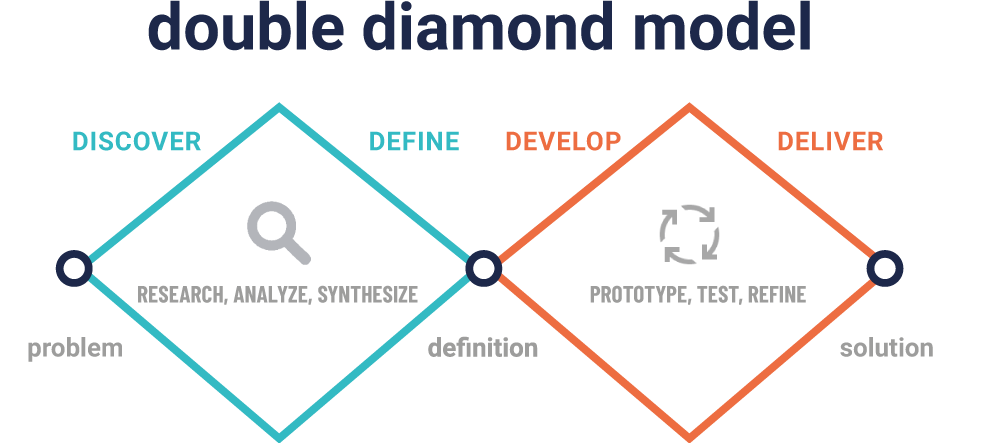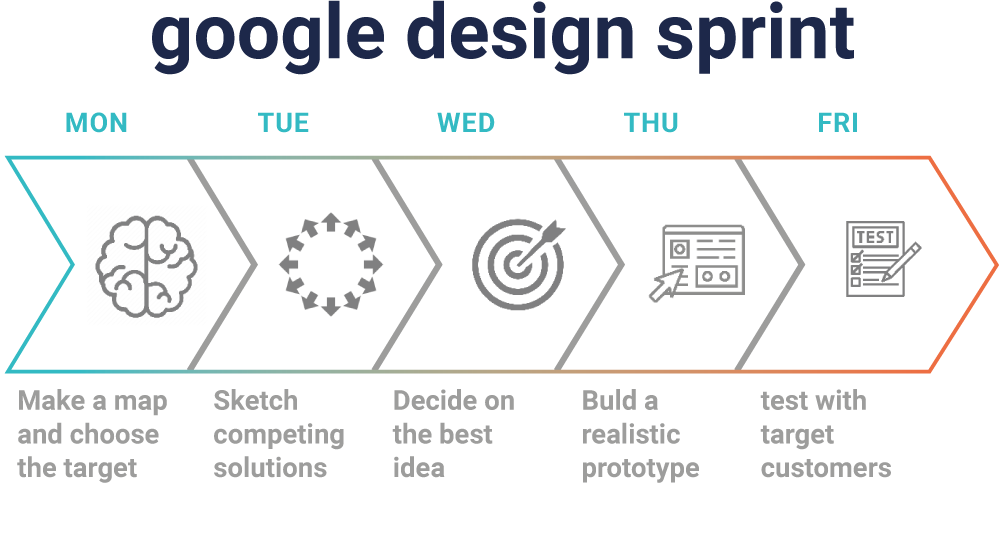It is a popular method for companies to develop new products or services. It helps both private and public companies to innovate.
Design thinking is a non-liner, iterative process that teams use in 5 different steps.
Understand the users and challenge assumptions. Redefine problems. Create innovative solutions to prototype. And test these prototypes on real users. These 5 steps are called: Empathise, Define, ideate, Prototype and Test.
Sometimes also called Double Diamond, switching between stages of convergence and divergence thinking, as a team.

It works best for complex, ill-defined, or unknown problems.
Why is it so important?
It’s crucial to develop and refine skills to understand and address rapid changes in users’ environments and behaviors. The problems are reframed in a human-centric way. Focus is always on what’s most important for the user.
You will see in history, ground-breaking solutions which were the result of design thinking.
What is the difference with a Google Design Sprint?
You may have come across a Google Design Sprint. What is it?
It is a process to create great design *faster*. Companies are more reluctant nowadays to commit for big development projects without a thorough understanding of chances of succes.
Google has developed a method to make the design process fast and still offer valuable insight. It focuses on getting insights into critical business questions in a very short timeframe – just 5 days.
The process is based on design thinking. It’s the same 5 steps but scheduled for 5 days. The 5 stages are called: understand – sketch – decide – prototype and Validate.

A Google Design sprint aims to help teams clearly define goals, validate assumptions and decide on a product roadmap before starting development.
Design Thinking is a mindset with a set of tools to be fun, creative, inspiring, and empathetic, but tailored to the needs of each project and participant. My approach is pragmatic and down-to-earth. I search for ways to put these tools to work and tailor them to the needs of each project.
In my position as an owner, product manager and UX designer for 2imagine, this was a day-to-day task in managing the development team and the evolution of the cloud platform.
See case studies in the portfolio about 2imagine, VIGC & EY hackathons.
I provide workshops and training in Design Thinking and Google Design Sprints. From making you and your team familiar with DT to coaching and facilitating your actual projects.

